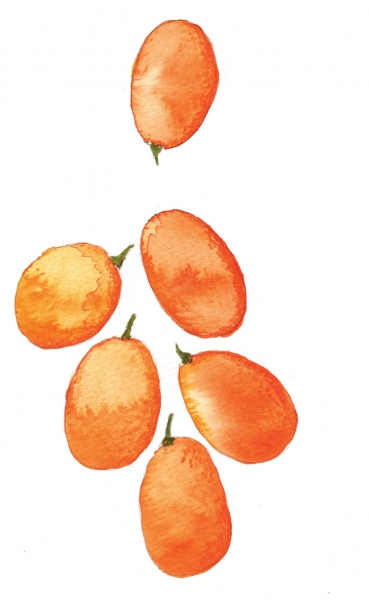Kumquats
Kumquats are wholly edible, bite-sized citrus fruits with an explosive flavor that can be addictive. I dare you to bite through the thin, sweet, aromatic rind to discover a burst of juicy tartness from the flesh and not want another.
Kumquats are in season from January through May, though, depending upon the weather, they sometimes ripen as early as December. The oval Nagami is the most popular, and is considered to be tarter than the Meiwa and Marumi varieties, both of which are slightly larger than Nagamis.
Most kumquats have seeds, although there is a relatively new Nagami that is virtually seedless. The seeds are small, and often soft enough to eat. They are easily removed when the fruit is cut open, in any event.
The kumquat originated in China and Southeast Asia, and it features in Lunar Year celebrations around the world. Its name in Cantonese translates as “gold orange,” and the fruit is thought to bring luck and prosperity in the newyear.
Because the fruit is definitely more tart than sweet, it’s often candied, either sliced or whole. Kumquats make an excellent marmalade, either on their own or in combination with oranges or lemons. Kumquats, like other citrus, are welcome additions in winter salads, sliced and tossed with sturdy greens like escarole and frisée. In early spring, kumquats can be combined with thin slices of radishes and young fava leaves and dressed with a Champagne and ginger vinaigrette for a delicious cross-season salad.
When candied, they and their syrup make a fine topping for ice cream, or the almond pound cake you can make with my recipe here.





